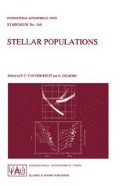Abstract
This paper presents a model of crowd behavior to simulate the motion of a generic population in a specific environment. The individual parameters are created by a distributed random behavioral model which is determined by few parameters. This paper explores an approach based on the relationship between the autonomous virtual humans of a crowd and the emergent behavior originated from it. We have used some concepts from sociology to represent some specific behaviors and represent the visual output. We applied our model in two applications: a graphic called sociogram that visualizes our population during the simulation, and a simple visit to a museum. In addition, we discuss some aspects about human crowd collision.
Access this chapter
Tax calculation will be finalised at checkout
Purchases are for personal use only
Preview
Unable to display preview. Download preview PDF.
References
C. Reynolds. “Flocks, Herds, and Schools: A Distributed Behavioral Model”. Proc. SIGGRAPH’87, Computer Graphics, v.21, n.4. July, 1987.
W. Reeves. “Particle Systems - A Technique for Modeling a Class of Fuzzy Objects”. Proc. SIGGRAPH’83, Computer Graphics, v.2, n.2. July, 1983.
X. Tu and D. Terzopoulos. “Artificial Fishes: Physics, Locomotion, Perception, Behavior”. Proc. SIGGRAPH’94, Computer Graphics, July, 1994.
J.H. Yin, S. Velastin and A.C. Davies. “Measurement of Crowd Density using Image Processing”. VII European Signal Processing Conference, EUSIPCO-94, Edinburgh, UK, Sept. 1994,.
T. Calvert and et. al. “Towards the Autonomous of Multiple Human Figures”. IEEE Computer Graphics & Applications, v. pp. 69–75, 1994.
E. Bouvier and Pascal Guilloteau., “Crowd simulation in immersive space management”. 3Rd EUROGRAPHICS Workshop on Virtual Environments, Monte Carlo (1996).
E. Bouvier, E. Cohen and L. Najman. “From crowd simulation to airbag depolyment: particle systems, a new paradigm of simulation”. Journal of Electronic Imaging 6 (1), 94–107 (January 1997).
R. Boulic, T. Capin, Z. Huang, P. Kalra, B. Lintermann, N. Magnenat-Thalmann, L. Moccozet, T. Molet, I. Pandzic, K. Saar, A. Schmitt, J. Shen and D. Thalmann. “The HUMANOID Environment for interactive Animation of Multiple Deformable Human Characters”. Proceedings of EUROGRAPHICS’95, p.337–348 (Maastricht, The Netherlands, August 28 september, 1995 ).
P. Bécheiraz and D. Thalmann. “A Model of Nonverbal Communication and Interpersonal Relationship between Virtual Actors”. Proc. of the Computer Animation’96, Geneva, Switzerland, pp. 58–67. May, 1996.
Hellmuth Benesh. “Atlas de la Psychologie”. Librairie Générale Française, 1995, pour l’édition française.
J. S. McClelland. “The Crowd and The Mob”. Book printed in Great Britain at the University Press, Cambridge. 1989.
M. E. Roloff. “Interpersonal Communication - The Social Exchange Approach”. SAGE Publications, v.6, London. 1981.
P. Mannoni. “La Psychologie Collective”. Presses Universitaires de France, Paris. 1985.
O’Renault, N.M.Thalmarin, D. Thalmann. “A Vision Based Approach to Behavioral Animation”. The Journal of Visualization and Computer Animation, v.1, n. 1, pp. 18–21.
T. K. Capin, I. S. Pandzic, H. Noser, N. Thalmann, D. Thalmann. “Virtual Human Representation and Communication in VLNET Networked Virtual Environments”. IEEE Computer Graphics and Applications, Special Issue on Multimedia Highways, March 1997.
Author information
Authors and Affiliations
Editor information
Editors and Affiliations
Rights and permissions
Copyright information
© 1997 Springer-Verlag/Wien
About this paper
Cite this paper
Musse, S.R., Thalmann, D. (1997). A Model of Human Crowd Behavior : Group Inter-Relationship and Collision Detection Analysis. In: Thalmann, D., van de Panne, M. (eds) Computer Animation and Simulation ’97. Eurographics. Springer, Vienna. https://doi.org/10.1007/978-3-7091-6874-5_3
Download citation
DOI: https://doi.org/10.1007/978-3-7091-6874-5_3
Publisher Name: Springer, Vienna
Print ISBN: 978-3-211-83048-2
Online ISBN: 978-3-7091-6874-5
eBook Packages: Springer Book Archive

